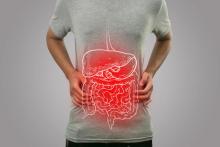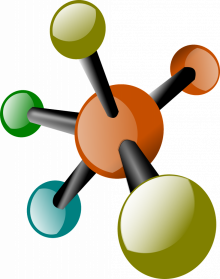Recent Publications
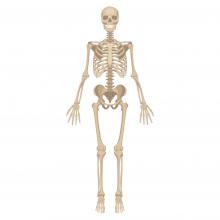
David Karasik: The influence of adult hip shape genetic variants on adolescent hip shape: findings from a population-based DXA study (Bone . )
Hip shape is a well-recognized risk factor for hip osteoarthritis (OA) and hip fracture. We aimed to investigate whether the genetic variants known to be associated with adult hip shape were also associated with adolescent hip shape.
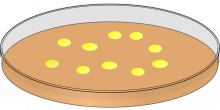
Lee S Izhaki-Tavor, Moshe Dessau: ATP-dependent RNA helicase domain of the ZC3H41 protein from Trypanosoma brucei: expression, purification and crystallization (Acta Crystallogr F Struct Biol Commun .)
A fragment of the Trypanosoma brucei ZC3H41 protein encompassing the ATP-dependent RNA helicase domain was successfully subcloned for expression in a bacterial system (Escherichia coli). Following expression, the protein was purified and crystallized using the vapor-diffusion method. The protein crystals were optimized at a 1:1 protein:reservoir solution ratio using PPGBA 2000. The optimized crystals diffracted to a dmin of 3.15 Å. The collected data revealed preliminary structural information regarding this newly discovered protein.

Maayan Gruber, Danny Damry, Nur Ibrahim, Daniel Glikman, Ohad Ronen: Pediatric acute otitis externa: Characteristics and predictors for hospital admission (Int J Pediatr Otorhinolaryngol . )
Acute otitis externa (AOE), is a common infectious disease affecting children and adults. Its peak prevalence is around the summer months, it involves the external auditory canal and in most cases is due to bacterial agents....This study highlights the main clinical variables which may predict hospitalization among children with AOE as well as the dominant role of sensitive strains of PA in the pathogenesis of this condition in children.

Enav Yefet, Abeer Suleiman: Relationship between patient ethnicity and prevalence of anemia during pregnancy and the puerperium period and compliance with healthcare recommendations - implications for targeted health policy (Isr J Health Policy Res)
Anemia is common during pregnancy and the puerperium. The association of ethnicity as well as other characteristics with anemia and compliance with healthcare recommendations has not been studied sufficiently and needs to be explored in order to implement a targeted health policy. We examined the association between ethnicity and the risk for prenatal and puerperium anemia and the compliance with healthcare recommendations. This effort aims to guide reforms in policies and practices that will assist in decreasing anemia prevalence in Israel.
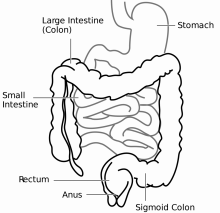
Amir Mari, Tawfik Khoury, Mahmud Mahamid: The Yield of Ileoscopy: Does Indication Matter? (Isr Med Assoc J .)
While the routine performance of terminal ileum (TI) intubation during colonoscopy procedures is perceived to have a low yield, its utility during colonoscopies performed for specific indications have not been well studied. This study assesses the diagnostic yield of an indication-based ileoscopy in real-life practice.
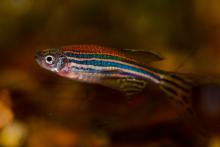
Bodhisattwa Banerjee, David Karasik: Genome-wide identification of novel long non-coding RNAs and their possible roles in hypoxic zebrafish brain (Genomics . )
Long non-coding RNAs (lncRNAs) are the master regulators of numerous biological processes. Hypoxia causes oxidative stress with severe and detrimental effects on brain function and acts as a critical initiating factor in the pathogenesis of Alzheimer's disease (AD)..... We identified specific lncRNAs present in the syntenic regions between zebrafish and humans, possibly functionally conserved. We thus identified several conserved lncRNAs as the probable regulators of AD genes .
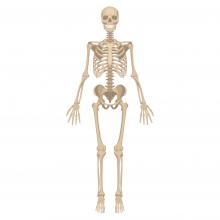
David Karasik: A meta-analysis of the transferability of bone mineral density genetic loci associations from European to African ancestry populations (J Bone Miner Res . )
Genetic studies of bone mineral density (BMD) largely have been conducted in European populations. We therefore conducted a meta-analysis of six independent African ancestry cohorts to determine whether previously reported BMD loci identified in European populations were transferable to African ancestry populations.
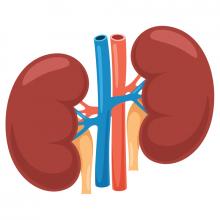
The Therapeutic Effect of Active Vitamin D Supplementation in Preventing the Progression of Diabetic Nephropathy in a Diabetic Mouse Model (J Diabetes Res . )
Diabetic nephropathy (DN) is one of the most common microvascular complications of diabetes and is the leading cause of end-stage renal disease (ESRD) and replacement therapy worldwide. Vitamin D levels in DN patients are very low due to the decrease in the synthesis and activity of 1-α hydroxylase in the proximal tubule cells and decrease in the vitamin D receptor abundance. To date, few studies have shown the antioxidant effects of 1α,25-dihydroxyvitamin D3 [1,25(OH)2D3] on hyperglycemia-induced renal injury. The selective activator of the vitamin D receptor, paricalcitol, reduces proteinuria and slows the progression of kidney injury. The precise mechanism through which vitamin D affects diabetic status and provides kidney protection remains to be determined. (Nakhoul Nakhoul, Tina Thawko, Evgeny Farber, Inbal Dahan, Hagar Tadmor, Anaam Hanut, Ghasan Salameh, Ibrahim Shagrawy, Farid Nakhoul)

Keren Aviel-Shekler, Yara Hamshawi, Worood Sirhan, Dmitriy Getselter, Kolluru D Srikanth, Assaf Malka, Ron Piran, Evan Elliott: Gestational diabetes induces behavioral and brain gene transcription dysregulation in adult offspring (Transl Psychiatry . )
The etiology of Autism Spectrum Disorders (ASD) includes a strong genetic component and a complicated environmental component. Recent evidence indicates that maternal diabetes, including gestational diabetes, is associated with an increased prevalence of ASD. While previous studies have looked into possible roles for maternal diabetes in neurodevelopment, there are few studies into how gestational diabetes, with no previous diabetic or metabolic phenotype, may affect neurodevelopment. In this study, we have specifically induced gestational diabetes in mice, followed by behavioral and molecular phenotyping of the mice offspring.
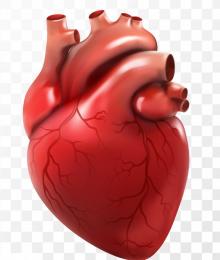
Irina Nordkin, Tatyana Levinas, Inna Rosenfeld, Majdi Halabi: Torsades de pointes after prolonged intravenous amiodarone therapy for atrial fibrillation (Clin Case Rep . )
Amiodarone can induce TdP; therefore, it should be avoided as a first choice for therapy in patients without heart disease. Careful QT interval monitoring, especially during intravenous use, can prevent development of this life-threatening arrhythmia.
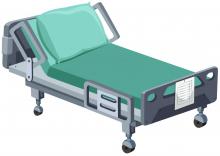
W Sbeit, A Kadah, A Shahin, N Abed, H Haddad, A Jabbour, H Said Ahmad, R Pellicano, T Khoury, A Mari: Predictors of in-hospital mortality among patients with Clostridium difficile infection: a multicenter study (Minerva Med .)
Clostridium difficile infection (CDI)-associated mortality is a major global health concern. Several clinical and laboratory parameters have been linked to poor prognosis in patients with CDI. In the current study, we aimed to assess the rate of in-hospital mortality among Israeli CDI patients and to look for clinical and laboratory parameters associated to death.

Tzipora Falik-Zaccai: The role of orotic acid measurement in routine newborn screening for urea cycle disorders (J Inherit Metab Dis . )
Urea cycle disorders (UCDs), including OTC deficiency (OTCD), are life-threatening diseases with a broad clinical spectrum. Early diagnosis and initiation of treatment based on a newborn screening (NBS) test for OTCD with high specificity and sensitivity may contribute to reduction of the significant complications and high mortality. The efficacy of incorporating orotic acid determination into routine NBS was evaluated.
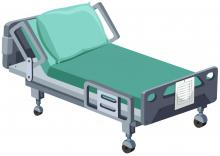
Anuj Ahuja, Guy Journo, Ron Eitan, Meir Shamay: High levels of LINE-1 transposable elements expressed in Kaposi's sarcoma-associated herpesvirus-related primary effusion lymphoma (Oncogene .)
Kaposi's sarcoma-associated herpesvirus (KSHV, HHV-8) is a gamma herpesvirus associated with several human malignancies. Transposable elements (TEs) are ubiquitous in eukaryotic genomes, occupying about 45% of the human genome. TEs have been linked with a variety of disorders and malignancies, though the precise nature of their contribution to many of them has yet to be elucidated. ...This observation is relevant for the treatment of KSHV-associated malignancies since they often develop in AIDS patients that are treated with RT inhibitors with potent inhibition for both HIV and L1 RT activity.



